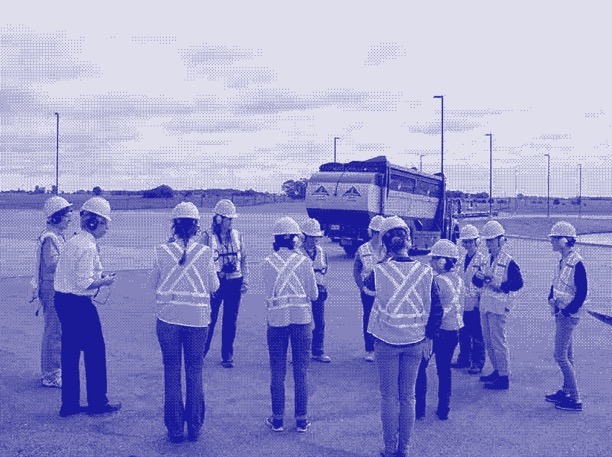Snippets from Synthetic Collective’s A DIY Fieldguide for Reducing the Environmental Impact of Art Exhibitions and a Reading List
Originally published in June, 2021

This is part of the Art Museum’s ongoing series of Virtual Spotlights centred on the exhibition Plastic Heart: Surface All The Way Through, organized by Synthetic Collective and produced by the Art Museum, where it was on view from September 8 to November 20, 2021. Click here for details on the exhibition.
“Centred on the impacts of plastics in our culture and the environment, one of the additional guiding questions of our project Plastic Heart was: can we make an exhibition that is carbon-neutral? This question is deceptively simple because the layers of the exhibition that the viewer sees hide the many steps that go into building the exhibition itself. Where does one begin to tally the environmental impact of an exhibition? Is it in the space itself as the art works and artefacts are assembled? Or is it in the very first steps of the process, which might involve mining for heavy metals and pigments, manufacturing chemicals and products, laying the fibre optic cables that underlie the systems of communication that are key components of exhibition making….”
“We suggest that art museums and exhibitions can provide a model for showcasing how exhibitions can themselves be sites for research into the environmental consequences of materially-based public facing forms of education…. We remain cognizant that any “solutions” must be part and parcel of and contribute to advocacy efforts that extend far beyond the realm of the museum.”
“Museums, especially large ones, tend towards a simultaneous embrace of the new amid a culture of indefinite preservation. In the vast expansion of museum complexes has emerged a fundamentally paradoxical relationship to time, such that the goal of collecting is to arrest time through the twin processes of collection and preservation, while simultaneously museums are charged with either portraying or recreating pasts that should have decayed, thus creating a kind of unnervingly static past-in-the-present. This is true even of the most cutting-edge contemporary art institutions, which nestle a resistance to changing environments and an embrace of unwavering humidity levels at the core of a perception that the content of the gallery is always ahead-of-the-times.”
“[I]mportant advances in protecting and preserving artworks and artefacts have led to the imposition of stringent controls on museum settings, and sophisticated lighting, ventilation, heating, and cooling systems that exact a heavy energy cost. As the climate changes outside in increasingly erratic ways, inside the museum it maintains an artificial constancy that belies the very conditions often depicted or analyzed by many works of eco- or environmental art.”
Read the entire Fieldguide here.

A Reading List
Plastics and Art
Plastics and Museums
Plastic Matter Out of Place
Plastics and the Pandemic
Intersectional Environmentalism
Science
Credits
Plastic Heart: Surface All the Way Through is an experimental exhibition that examines plastic as art material, cultural object, geologic process, petrochemical product, and a synthetic substance fully entangled with the human body. Curated by Synthetic Collective, the exhibition mobilizes practices of institutional critique and proposes an alternative method of exhibition development and presentation that addresses ecology and sustainability in content and form.
Synthetic Collective is an interdisciplinary collaboration between visual artists, scientists, and cultural workers. They work to sample, map, understand, and visualize the complexities of plastics and micro-plastics pollution in the Great Lakes Region. Synthetic Collective is Kelly Jazvac, Kirsty Robertson, Kelly Wood, Patricia Corcoran, Heather Davis, Tegan Moore, Sara Belontz, Lorena Rios Mendoza, Kathleen Hill, and Ian Arturo.
Images Credit:
Banner image: Synthetic Collective member Kelly Jazvac sifting through debris for plastic pollution at a Lake Huron beach. Retrieved from Plastic Heart: A DIY Fieldguide for Reducing the Environmental Impact of Art Exhibitions.
Image 1: The Synthetic Collective in a workshop taking place at the The City of London’s Material Recovery Facility. Retrieved from Plastic Heart: A DIY Fieldguide for Reducing the Environmental Impact of Art Exhibitions.
